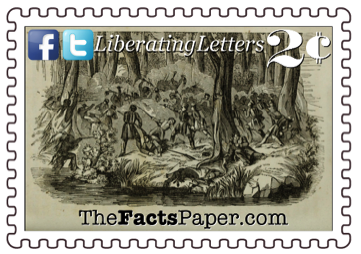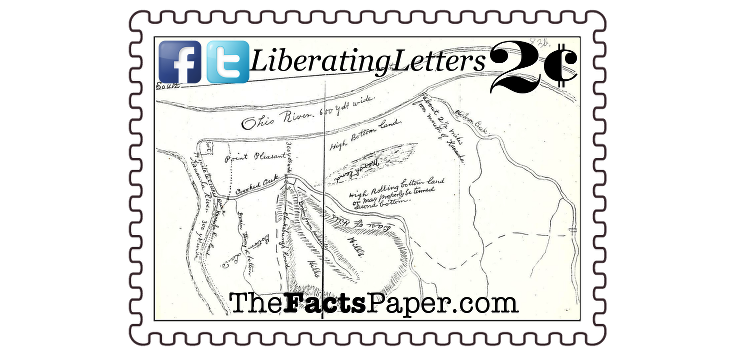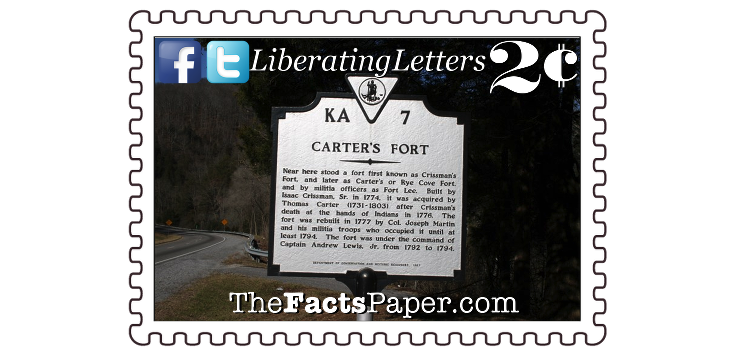Approximately one-fifth of the Virginia militia suffered injuries, including 75 fatalities and 140 wounded. The exact number of Shawnee casualties is uncertain, however it is accepted that Tecumseh’s father was among the dead. (see America's Ongoing Civil War and How The North Was Won) Natives are known to carry off as many of the dead as possible. In addition, it is believed numerous bodies were thrown into the Ohio River as the warriors retreated. Regardless, twenty-one remained on the battlefield while another twelve were discovered hidden in the forest.
The Battle of Point Pleasant was over, yet Lewis’ fight was just beginning. He quickly gathered his troops and continued on to meet Lord Dunmore. While on the way, Simon Girty meet them twice in one day to convey orders from Dunmore, commanding Lewis to turn around and go back. This only added to Lewis’ suspicions of Dunmore’s actions. As a result, Lewis boldly disobeyed Dunmore’s orders, continuing on with the consent and support of his officers and men.
Lewis made it to within a few miles of Dunmore’s Camp Charlotte, before Dunmore went out to meet him. He brought with him Shawnee Chief Cornstalk and Lenape (Delaware) leader White Eyes, as well as others. Claiming they were in negotiations for a peace treaty, Dunmore insisted Lewis depart and return home. Several of Lewis’ officers, including Col. Daniel Morgan (see Morgan's Miracle and Pivot Points) and Col. Samuel McDowell, as well as George Rodgers Clark (see The Founding Father Of Westward Expansion), were as suspicious of Dunmore as Lewis was. With Virginia’s interests in mind, they insisted on attending the talks.
On October 10, 1774, the colonists fought the Shawnee at the Battle of Point Pleasant, the only battle in what is known as Dunmore’s War. It was bloodiest Indian attack on the white man prior to the Revolutionary War. Not much was written about the battle at the time, not even a battle report, which was highly unusual. It’s why many claim there isn’t any evidence that Lord Dunmore may have been working behind Lewis’ back. However, a review of the events, including accounts of the battle passed down from the soldiers to their families, along with an evaluation of the political climate at the time, others have drawn a different conclusion. That conclusion led to determining the Battle of Point Pleasant as the first real battle of the Revolutionary War.
Up until this point, Boston was the primary site of colonial frustration over tyrannical British oppression. Since the patriots revolted against the Stamp Act (see If This Be Treason) at the Liberty Tree in 1765 (see Tree of Liberty), followed by the Townshend Acts (see Acts Of Oppression), to the Boston Massacre in 1770 (see Mayhem And Massacres), and then the Boston Tea Party in 1773 (see Tyrants And Tea Parties), tensions had been increasing between the patriots and the Tories. After Parliament passed the Coercive Acts, or Intolerable Acts as the Americans called them, leaders in the colonies decided a delegation needed to be called to find a resolution with King George III. The First Continental Congress convened on September 5, 1774, with representatives from 12 of the 13 colonies. As they were composing a letter to King George demanding he address their grievances, General Lewis was marching to Point Pleasant to meet with Lord Dunmore.
Lord Dunmore was well aware of the uprise of the colonists. In 1773, he appointed Dr. John Connolly “Indian Agent” and “Land Agent”. Immediately after, tensions starting rising amongst Virginians and Pennsylvanians concerning the West. Likewise, the natives greatly increased their hostility to losing their hunting grounds, finding a convenient ally in Great Britain, who encouraged uprisings against the imposing settlers. During a Daniel Boone expedition into the Kentucky lands that same year, Shawnee, Delaware and Cherokee attacked a group of men and boys, killing Boone’s eldest son James. (see The Founding Father of Westward Expansion) Occurring on October 10, 1773, this bloody attack helped prompt the need for Dunmore and Lewis’s advance in Ohio Country, which resulted in the Battle of Point Pleasant exactly one year later.
In June of 1774, Dunmore commissioned Boone to escort surveyors to settlements along the Ohio. When disputes and Indian attacks increased over the location of Ohio Country border, Dunmore convened a militia. In Boone’s own words, “Soon after I returned home, I was ordered to take the command of three garrisons during the campaign which Gov. Dunmore carried on against the Shawanese [sic] Indians; after the conclusion of which, the militia was discharged from each garrison.” Dunmore is credited with leading the charge against the natives resulting in the Shawnee defeat at Point Pleasant. However, serious questions exist regarding which side he was really on.
General Lewis’ son, Col. Andrew Lewis, revealed that, “It is known that Blue Jacket, a Shawnee chief, visited Lord Dunmore’s camp on the 9th, the day before the battle, and went straight from there to the Point, and some of them went to camp with Lord Dunmore immediately after the battle.” (see The Frontiersman and How The North Was Won) He continued, “Lord Dunmore, in a conversation with Conally [sic] and others on the 10th, the day of the battle, remarked that ‘Lewis is probably having hot work about this time.”
Col. John Stuart, a participant in the battle, wrote:
"The battle of Point Pleasant was in fact the beginning of the Revolutionary War, that obtained for our county the liberty and independence enjoyed by the United States, for it is well known that the Indians were influenced by the British to commence the war to terrify and confound the people, before they commenced hostilities themselves the following year at Lexington. It was thought by British politicians that to incite an Indian war would prevent a combination of the colonies for opposing parliamentary measures to tax Americans. The blood therefore spilt upon this memorable battlefield will long be remembered by the good people of Virginia and the United States with gratitude."
Before long, these accounts of the battle began circulating around Virginia by those involved. After the British attack at Lexington and Concord (see The Shot Heard 'Round The World), the same militiamen that Dunmore sent to Point Pleasant forced him and his British troops out of Virginia by the end of 1775. Likewise, the Virginia legislature thusly changed Dunmore County to Shenandoah County. However, not before Dunmore strengthened the alliances he had previously made with the natives.
Liberty, when we don’t learn our history, we are doomed to repeat it. The Battle of Point Pleasant has been almost completely forgotten. As a result, we did not learn the lessons of Lord Dunmore working with Connolly to turn the Indians and the colonists against each other to further his own cause. So today, we have politicians, news outlets and other forces pitting other groups in America against each other: Blacks vs. Whites, Muslims vs. Christians, Liberals vs. Conservatives, Gay vs. Straight, NFL players vs. NFL fans, and the list goes on and on. They’ve even whipped up Antifa to believe violence against those they oppose is justified, much like Dunmore did with the Shawnee. (see There's Nothing Right About The Alt-Right) Yet evidence shows, more times than not, when individuals from these groups let down their guard and engage in a thoughtful conversation with their “enemy”, they often walk away understanding and appreciating the other side just a little better. But since that doesn’t help the ones wanting to manipulate the masses to bring about their agenda, they will keep fanning the flames of hate and dissent. The key is not letting them ignite your fire.
Liberty, these letters are not just America’s history or the world’s history, they’re also your history. Like the vast majority of Americans, you have personal connections to the people and events that occurred in making and building this country. Your 6th Great-grandfather, Issac Chrissman (aka Chrisman or Christman) is found on the list of soldiers at Point Pleasant, coming from the Glade Hollow Fort garrison. Therefore, Liberty, the blood of American Revolutionary Patriots runs through your veins. Though we don’t have a personal story of his experience, he did survive, and became known for building a fort on the edge of the colonial territory at Rye Cove. Two years after the battle, he and two of his sons were killed by Indians that attacked his fort. Originally named Chrissman Fort, it was later called Rye Cove Fort or Carter’s Fort after Isaac’s death. According to a Virginia Historical Marker, Captain Andrew Lewis Jr., later promoted to colonel, commanded the fort from 1792 to 1794.
October 10, 2017
Dear Liberty,
General Andrew Lewis knew something wasn't right when they arrived at the rendezvous point at the mouth of the Kanawha at the Ohio River. Lewis had traveled 160 miles from Camp Union (Lewisburg, WV) through thick forestry with his militia forces in 19 days. He was bewildered that British Governor of Virginia John Murray, more famously known as “Lord Dunmore,” had not yet arrived from Fort Pitt (Pittsburg, PA) with his. (see Join, Or Die and Bulletproof) Shortly after Lewis sent runners to Fort Pitt, dispatches from Dunmore entered the encampment stating that he changed his course. Instead of meeting at Point Pleasant, Dunmore chose to travel into the Ohio Country farther north. Therefore, Lewis should cross the Ohio River there, after which they would meet and merge their forces on the other side.
Early the next morning, one of Lewis’ men frantically ran back into the camp. Trying to catch his breath, he informed the others of the Shawnee camp he and his fellow soldier stumbled upon while hunting deer along the Ohio River. He escaped their gunfire, unlike his unlucky companion, and returned to camp as quickly as possible to warn the others. While he was still relaying his story, two scouts entered the camp with the same information regarding the nearby Shawnee.
Lewis ordered two divisions to head up the river. Lewis’ brother, Col. Charles Lewis, commanded 150 men while Col. William Fleming led close to another 100. As they made their way up the Ohio, one group on the left and one on the right, the sun began to rise. About a half-mile from the militia’s camp, Chief Cornstalk and the Shawnees attacked. It was not long until Col. Lewis sustained a fatal wound, dying within a few hours of his injury. Soon after Col. Fleming was wounded twice in the arm and once in the chest.
With both commanders out of commission, the small American force was under grave danger of annihilation as they ran for cover. During their retreat, they ran into reinforcements, led by other officers entering the battlefield. The fighting continued on through the afternoon as repeated shouts of “Be strong! Be strong!” could be heard from Cornstalk. With dusk quickly approaching, Gen. Lewis needed to end this battle soon.
Using the terrain as a weapon, three companies traveled up the Kanawha River, using the high, thickly weed-covered banks as concealment. Emerging from behind the Shawnee, they attacked the surprised Indians from the rear. Finding themselves squeezed in between two forces, the natives quickly withdrew across the Ohio River.
Whether your ancestors fought for America’s liberty, to emancipate the black man or as a slave fighting for their own freedom, for Civil Rights of women and blacks, to liberate people under tyrannical regimes, or just ones who left everything behind to immigrate to a country that merely gave them the opportunity to chart their own course, we all have a personal connection to our heroic country’s past. It is our duty to find it and celebrate it.
Unfortunately, there are some who want, nay need, us to forget those connections because they remind us that America is not the purely evil empire they claim it to be. They remind us we all have a personal stake in this idea we call America. Don’t let yourself fall into the pit of ignorance and manipulation. We are going to need strong, knowledgeable and principled souls at the top of that gaping hole, lifting America out of it, just as our forefathers did. Like your ancestors, America needs you to carry on her banner of Liberty and Freedom.
That’s my 2 cents.
Love,
Mom
THE FORGOTTEN BATTLE





